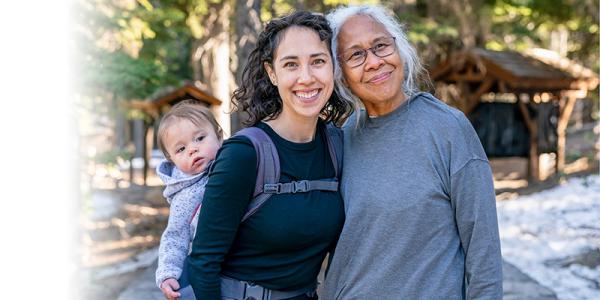
In this article:
- Asian American and Pacific Islander (AAPI) women may have lower breast cancer rates but often face later-stage diagnoses.
- Cultural barriers and lack of awareness can lead to delayed screening and treatment.
- Regular screenings and open conversations with healthcare providers are important for early detection and better outcomes.
Diagnoses among women under 50 of Asian and Pacific Island descent have increased more than 50%.
Written By:
Tran Ho, DO, FSSO, FACS, is a breast surgical oncologist who specializes in the diagnosis and treatment of breast cancer and benign breast diseases at El Camino Health. She completed her breast surgical oncology fellowship at Emory University in Atlanta, GA. She is a Fellow of the Society of Surgical Oncology and a member of the American Society of Breast Surgeons.
As a breast surgical oncologist in the Bay Area, I have the privilege of caring for women from all backgrounds who are united by their breast cancer journey.
Knowledge truly is power. The more we understand about our individual risks, the better equipped we are to detect and treat breast cancer early. Both genetic factors—such as inherited mutations and family history—and personal factors like age, reproductive history, and lifestyle choices can affect our risk of developing breast cancer. Understanding these risks allows us to take proactive steps toward early detection and prevention.
While overall breast cancer mortality rates continue to decline, the number of Asian American and Pacific Islander (AAPI) women diagnosed with the disease is rising.
Since 2000, cases among AAPI women under 50 have increased by more than 50%, according to the National Cancer Institute. Patient outcomes can vary widely among different ethnic groups. Although more research is needed to understand the reasons behind this surge, it’s crucial to be aware of these trends when assessing risk.
Even as we seek more answers, there are important actions you can take today to protect your health:
- Prioritize whole, plant-based foods: Focus on a diet rich in colorful fruits and vegetables, whole grains, and high-quality protein sources. Limit processed foods and added sugars.
- Commit to regular physical activity: Establish a consistent exercise routine that includes both aerobic and strength training. My general recommendation is at least 150 minutes of moderate-intensity or 75 minutes of vigorous-intensity aerobic exercise per week, along with strength training for all major muscle groups at least twice weekly.
- Educate yourself about breast cancer: Understanding your personal risk empowers you to advocate for your health. Discuss with your healthcare provider which screening strategies are most appropriate for you.
As a doctor, I help patients decide when to start screening and which types of imaging tests are right for their level of risk.
In addition to mammograms, I may recommend a breast ultrasound for women with dense breast tissue or a breast MRI for those at higher risk. For patients with a significant family history, genetic testing may be appropriate to identify mutations that increase breast cancer risk.
These steps matter: When breast cancer is detected at its earliest stage, the five-year survival rate is nearly 99%. However, this rate can be lower among AAPI women, making it even more important to take charge of your health and initiate early conversations about your risk. Early detection not only improves survival but also expands treatment options and enhances quality of life during survivorship.
My patients are the heart of my work. Growing up in the Bay Area, I am inspired every day by my patients, their families, and the community I serve. They are the ones who bravely navigate the emotional and physical challenges of this journey.
If we can help prevent or catch breast cancer early, that’s a win. My hope with this blog post is to raise awareness among AAPI women about their potential risk and connect them with the resources they need. We are here for you. Learn more about breast cancer care at El Camino Health here.
This article first appeared in the October 2025 edition of the HealthPerks newsletter.

